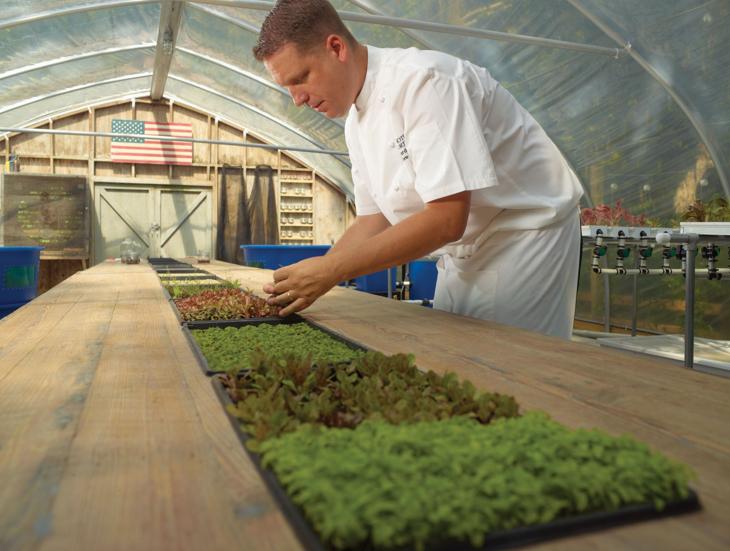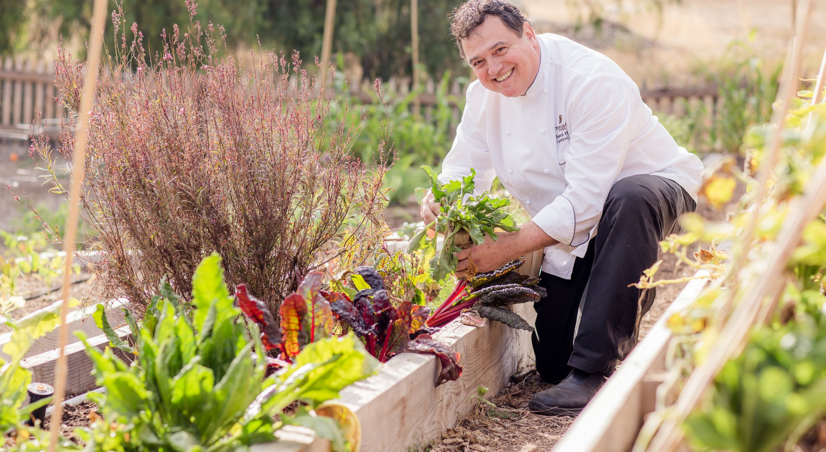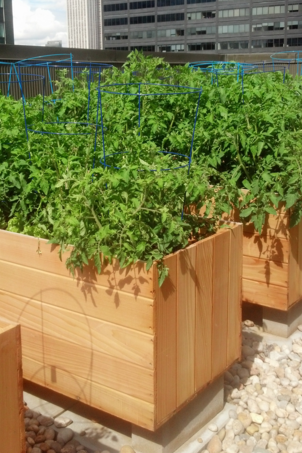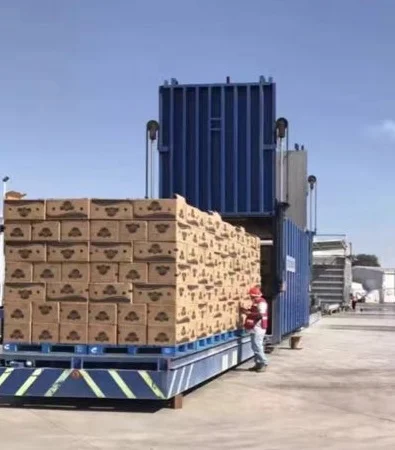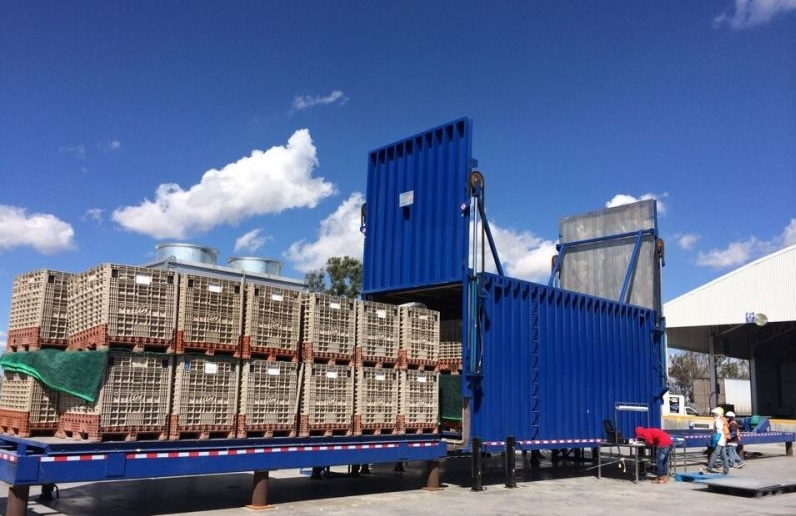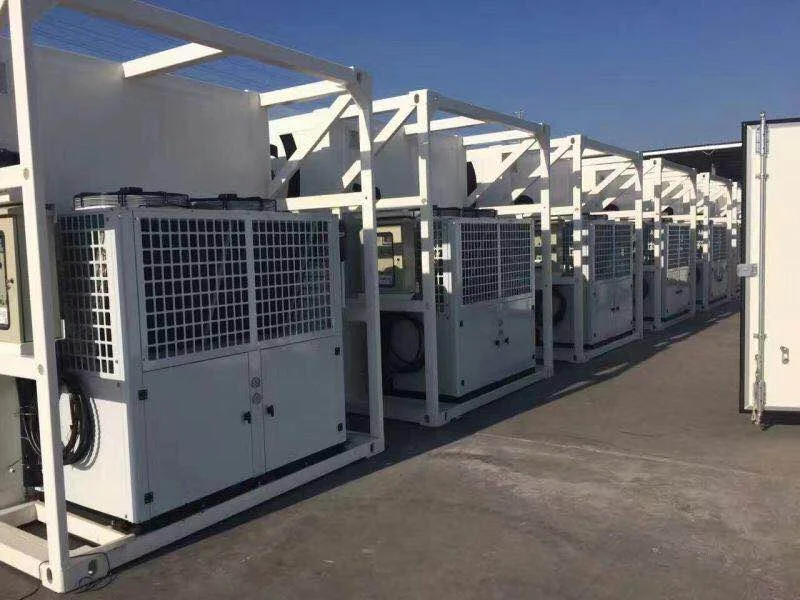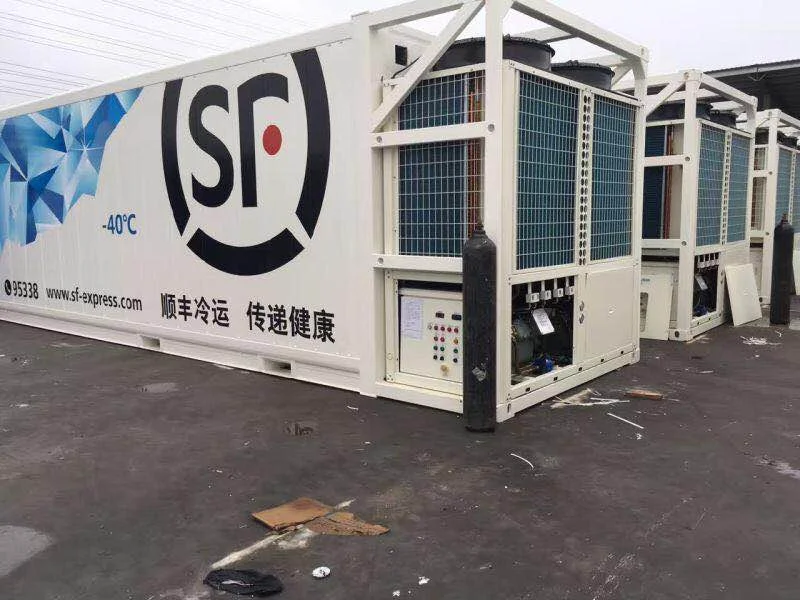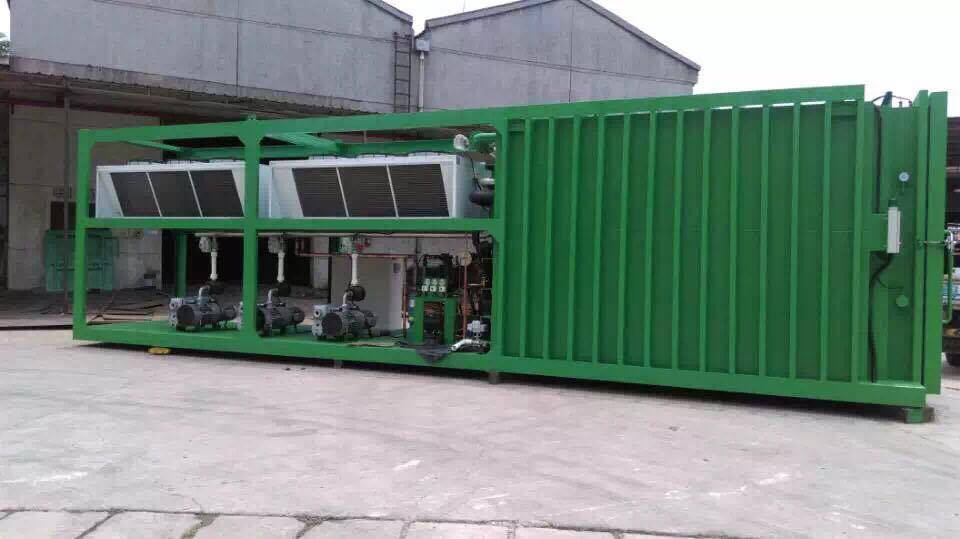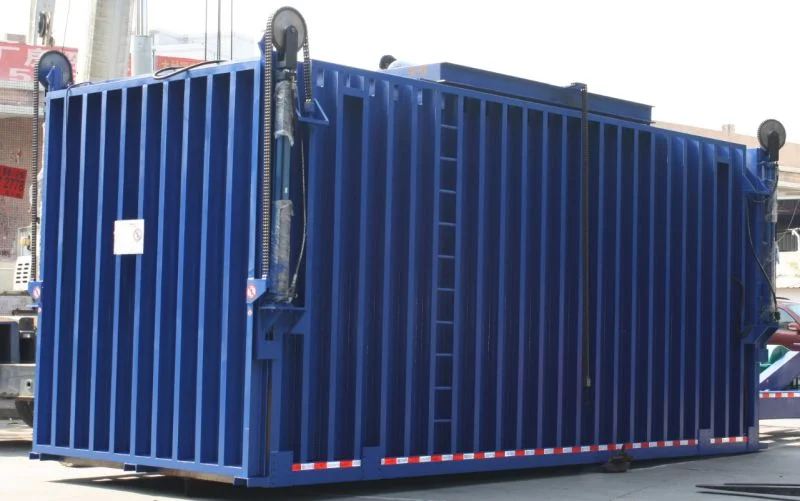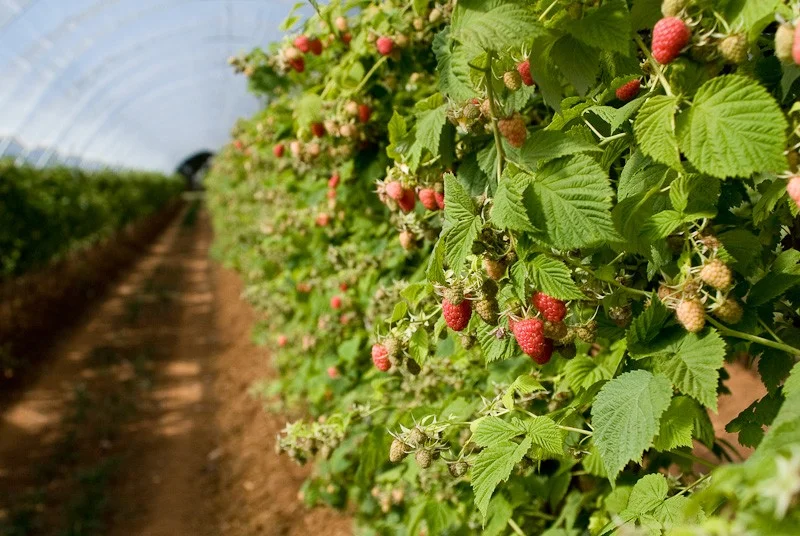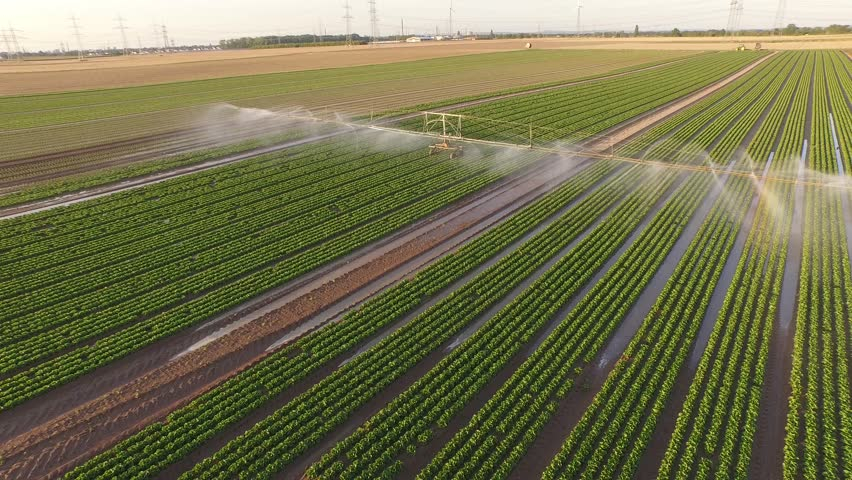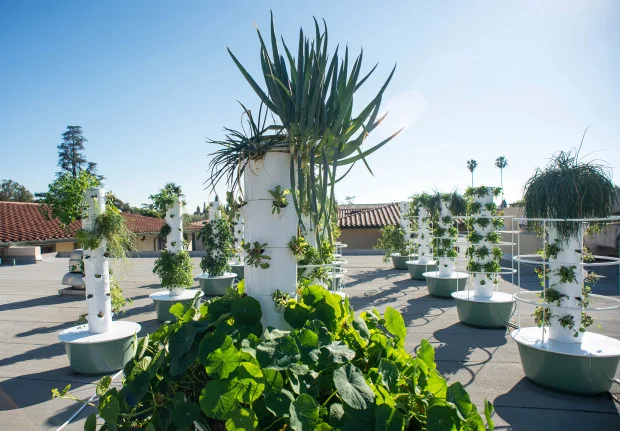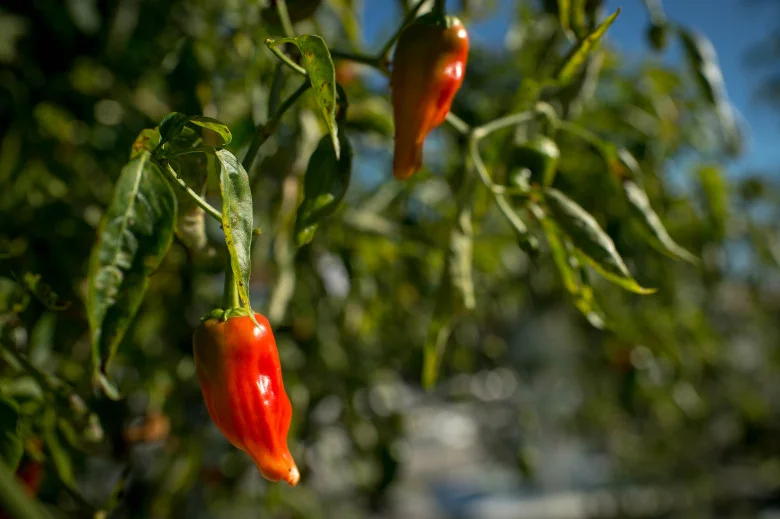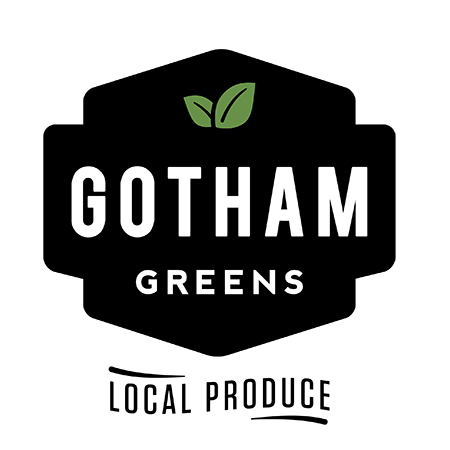
Welcome to iGrow News, Your Source for the World of Indoor Vertical Farming
How Smart Monitoring Is Helping An Urban Farm to Flourish
Growing Underground, which launched in 2015 and is located in former WW2 air-raid shelters, uses hydroponic systems to sustainably produce the pesticide-free crop. The tunnels are leased from Transport for London (TfL), which was happy to see them being put to work having laid dormant for 60 years.
Read more at: https://phys.org/news/2018-01-smart-urban-farm-flourish.html#jCp
How Smart Monitoring Is Helping An Urban Farm to Flourish
January 18, 2018, University of Cambridge
Microgreens and salad leaves. Credit: Growing Underground
An innovative and award-winning urban farming facility is creating energy-efficient growing conditions in tunnels 120ft below the busy streets of Clapham in London. Microgreens and salad leaves are thriving with the help of a smart monitoring programme that records temperature, humidity and CO2 levels.
Growing Underground, which launched in 2015 and is located in former WW2 air-raid shelters, uses hydroponic systems to sustainably produce the pesticide-free crop. The tunnels are leased from Transport for London (TfL), which was happy to see them being put to work having laid dormant for 60 years.
The aim of Growing Underground is to bring edible crop production to the heart of the city while minimising the carbon impact of food transportation. The verdant trays of fennel, garlic chives, pea shoots and coriander, among others, can be picked and on a plate in a restaurant within hours. The forward-thinking company, which sells its greens through Ocado and Marks & Spencer and aims to be carbon neutral, has just been awarded the BBC Future Food Award.
Cambridge Centre for Smart Infrastructure and Construction (CSIC) Co-Investigator Dr. Ruchi Choudhary, who leads the Energy Efficient Cities initiative (EECi) at the Department of Engineering, started working with Growing Underground in 2015, following an energy-optimising project completed for the Royal Botanic Gardens, Kew. This retrofit study of the greenhouses at Kew saw the development of a simulation model that incorporated the heat and mass transfer associated with plant transpiration into the dynamic energy simulation of the greenhouse structures.
"The idea was to expand the energy-optimisation project into urban farming and the collaboration with Growing Underground provided the ideal environment," says Melanie Jans-Singh, an EECi Ph.D. student investigating the integration of urban farming to cities reusing wasted resources. Rebecca Ward, a Research Associate at the EECi, who developed the greenhouse energy simulation at Kew, is also part of the team working with Growing Underground.
In March last year a range of instrumentation, including wireless sensors and web cams that monitor temperature, humidity, CO2, air velocity and light, was installed in a section of the tunnel that is currently being used for growing crops. More sensors were added this summer to help to maintain a constant tunnel temperature of between 20-25C. "There are big spatial variations of temperature in the tunnel but everywhere needs to have the same conditions," explains Melanie, who has spent the past six months building and calibrating the sensors. "Most sensors need cables. Our sensors are wireless and are designed to cope with the humidity underground."
There are two tunnels on different levels – in total 65,000 square feet of burrows with the capacity to accommodate up to 8,000 people – and Growing Underground has plans to expand the business next year.
Urban farming is growing rapidly in Japan and South East Asia, where the facilities are referred to as plant factories which are located in dedicated new buildings. "While our focus is urban farming we are looking to repurpose spaces rather than using new buildings, and these could be tunnels or rooftops that are not currently being used," says Melanie.
Data collected from the instrumentation is informing the heat and mass transfer model of this unique 'tunnel greenhouse'. "Our monitoring is helping Growing Underground to optimise the yield while reducing energy consumption. If, for example, there is a doubt about how the plants are growing at a certain spot, I can refer to the measurement of air velocity so that we can identify the precise conditions. When the plants are growing better in one area than another, the instrumentation helps us to work out why."
Real-time monitoring means that conditions can be changed according to the analysed data. Ventilation is the chief energy consumer at the Growing Underground project and monitoring data has enabled adjustments that have cut consumption for ventilation without affecting yield.
The founders of the partially crowd-funded company, Richard Ballard, who discovered the tunnels when he was a film student scouting for locations, and Steven Dring, who has a background in logistics, are able to access the data 24/7. The analyzed data itself is of value; it creates a 'lifetime performance passport' which provides the asset owners, present, and future, with a rich source of information.
"We have been very lucky to partner with the University of Cambridge. Ruchi and her team have really helped us monitor and develop the space which will enable us to eventually get the optimum growing environment," says Richard. "They have provided us with monthly reports which have allowed us to make adjustments to improve temperature, humidity and air velocity, and now we are working together to improve CO2 levels through enrichment."
The collaboration between business and academia benefits all stakeholders. Growing Underground is providing the case study for further research and the academics are delivering data that will help the crops, and the company, to flourish.
In the longer term, the EECi team would like to create a how-to guide to adding a 'greenhouse' to a space not previously used for this purpose, identifying the conditions required to turn a space into a greenhouse. "We are using this case study to create a baseline simulation tool for integrating urban farming into unused urban space," says Melanie. "The second part of my Ph.D. will focus on finding optimal spaces in cities for urban farming. I will look at the whole of London and investigate other typologies of unused spaces within cities for the purpose of urban farming."
Additional aspects will be introduced to the simulation model with the purpose of optimising energy efficiency. "We will consider how we can integrate co-benefits between plants and buildings. When a building has heating there is a lot of waste heat produced. The waste heat (and perhaps also CO2) can be harnessed for a productive purpose." Melanie will also look at how urban farming could help to improve air quality, energy use and water use.
"Once we understand the synergies through our simulation model, any city can be considered in this way," says Melanie.
Rebecca, who built the energy-optimisation simulation model for Kew, is now applying her modeling talents to Growing Underground. The EECi team visits the Growing Underground tunnels once a month to check the instrumentation, report back to Richard and Steven and, occasionally, enjoy the fruits of their labour. "The fresh salad leaves and herbs really are good," says Melanie. "They're very tasty."
Explore further: Underground air-raid shelter feeding London restaurants
Provided by: University of Cambridge
6 Places Where Soil-Less Farming is Revolutionizing How We Grow Food
If it seems like “water, to which farmers have added the necessary nutrients for plant growth.hydroponic systems” are everywhere, that’s because they are. Hydroponic farming is one efficient way to grow fruits and vegetables in small spaces without the use of soil. Instead of dirt, plants grow down into
6 Places Where Soil-Less Farming is Revolutionizing How We Grow Food
by Greg Beach
If it seems like “hydroponic systems” are everywhere, that’s because they are. Hydroponic farming is one efficient way to grow fruits and vegetables in small spaces without the use of soil. Instead of dirt, plants grow down into water, to which farmers have added the necessary nutrients for plant growth. These are then absorbed, along with water, through a plant’s roots. Light is provided either by the sun or specially designed grow lights, with many sustainable systems powered by renewable energy sources. Aquaponic farming incorporates fish into the soil-less system, using the closed-loop nutrient cycle from fish digestion to their advantage. Some systems even feed nutrients to plants through the air! From water-less deserts to the sun-less underground, soil-less farming is offering new possibilities to feed an increasingly urban, growing global population in a more Earth-friendly way.
1. Stores
With consumers increasingly conscious of their environmental impact, many stores have realized that going green is good for business. Big-box store Target began a series of trials in spring 2017 in which vertical, hydroponic gardens were installed in various Target locations to provide customers with the freshest possible produce. In collaboration with MIT Media Lab and Ideo, Target designed a system that is capable of growing leafy greens and herbs with minimal water usage. The company hopes to someday branch out into other crops, such as potatoes, zucchini and beets. MIT may even offer Target use of rare heirloom tomato seeds for its project. Meanwhile, IKEA has teamed up with Denmark-based SPACE10 to design high-tech hydroponics systems in-stores and in homes.
2. Deserts
In preparation for a future dominated by climate change, in which oil becomes a lesser part of the world’s energy diet, Saudi Arabia has taken several major steps to build a more sustainable system in its challenging desert region. One such move is the rethinking of many traditional farming practices, especially focused on reducing water usage. A farm in the town of Jeddah uses neither water nor soil, rooting plants in mid-air while providing their nutrients through a mist. Designed by AeroFarms, the system is the first aeroponic farm in the Middle East and hopes to someday acquire all its water needs through capturing humidity in the air.
Related: The future of food: how dry farming could save the world
If a desert farm chooses to go hydroponic, there are ways to grow without draining freshwater supplies. In arid South Australia, SunDrops Farms grows 15% of the country’s tomato crop through a solar-powered hydroponic system. To eliminate the use of precious freshwater, SunDrops sources its water from the nearby saltwater gulf, which is then desalinated through the reflected heat of the sun.
In a very different kind of desert, soil-less farming helps growers from the Arctic to Antarctica make the most of a short growing season.
3. Cities
As the global population becomes more urban, cities are investing in more local food production systems that offer economic development opportunities and reduce a city’s carbon footprint. In a warehouse on the Near East Side of Indianapolis, Farm 360 are growing vegetables on a hydroponic system that is exclusively powered by renewable energy and uses 90 percent less water than traditional farming methods. The harvest is sold in local grocery stores while the farm supports dozens of living-wage jobs to residents of the neighborhood.
In even the most isolated urban areas, soil-less farming finds a home. With its ability to receive vital supplies and support a functioning economy severely restricted by the Israeli blockade, Gaza has stepped out onto the rooftops to grow its own food. Beginning in 2010, a United Nations-funded urban agriculture program equipped over 200 female-headed households with fish tanks, equipment, and supplies to build and maintain an aquaponics growing system. This initial spark has encouraged others to create their own and to teach others of this valuable skill.
4. The Underground
Farming without soil can often take place beneath the soil. In Paris, Cycloponics runs La Caverne, a unique urban farm that grows mushrooms and vegetables in an underground, formerly abandoned parking garage. The farm’s hydroponics system uses special grow lights to ensure the vegetables have what they need to survive. The mushrooms grow in a special medium and, through their respiration, provide valuable CO2 for the plants to thrive. La Caverne may have found inspiration from Growing Underground, London’s first underground farm. On 2.5 acres of unused World War II-era tunnels, Growing Underground produces pea shoots, several varieties of radish, mustard, cilantro, Red Amaranth, celery, parsley, and arugula.
Related: 7 agricultural innovations that could save the world
Honorable mention: shipping container farms. Although these may be mobilized on the surface, they may as well be underground due to the closed roof of most shipping containers. The solar-powered hydroponicsLA-based Local Roots can grow the same amount of vegetables, at cost parity, with 99 percent less water than traditional farming.
5. On the Water
Some soil-less growing operations take it a step further, leaving the ground behind entirely and opting for a farm floating on water. Barcelona-based design group Forward Thinking Architecture has proposed a progressive solution to the decreasing availability of arable land by creating floating, solar-powered farms. Using modules that measure 200 meters by 350 meters, Forward Thinking’s design allows for expansion and custom configuration of farms. Each module has three levels: a desalinization and aquaculture level at the bottom, then a hydroponic farming level, topped off by a level of solar panels and rainwater collection. The company estimates that each module would produce 8,152 tons of vegetables a year and 1,703 tons of fish annually.
Related: NexLoop unveils water management system inspired by spiders, fungi, bees and plants
Greenwave takes an alternative approach to soil-less, floating farming by combining the cultivation of shellfish and seaweed, both profitable crops that also help to clean the aquatic environment and absorb greenhouse gases. The farm requires little external input, pulls carbon dioxide from the air and water, and consumes excess nitrogen that could otherwise result in algal blooms and dead zones.
6. Your Home
Yes, you too could get in on the soil-less action. Whether you prefer to DIY or you’d rather something more straightforward, there are options for every style.
Lead image via Depositphotos, others via MIT OpenAg, Sundrop Farms, Esther Boston, Cycloponics, GreenWave, and Urban Leaf
This Traveling Farm Wants to Teach You How to Grow Your Own Edible Greens in Singapore
This Traveling Farm Wants to Teach You How to Grow Your Own Edible Greens in Singapore
By Coconuts Singapore Jan. 17, 2018
As urban farming gains traction in cosmopolitan Singapore, people are increasingly interested in growing their own edible gardens. But not all of us are born with a green thumb — and that’s where The Traveling Farm steps in.
A roving initiative by urban farming consultancy Pocket Greens, the pop-up space will rotate between three different locations — Bougainvillea Park (where it sits now), Raffles Place Park, and Dhoby Ghaut Green — for three months each from now till Dec 5, 2020, so you’ve got plenty of time to make your way over.
It’s not hard to recognize either. Housed in a bright orange recycled container, The Traveling Farm offers gardening workshops and programs, with videos on express gardening, tips on cultivating a lush garden, and sessions on growing your own greens.
Those keen on putting theory into practice can browse through the retail selection and bring home a variety of herbs, seeds, and gardening products.
Hotels Design Functioning Gardens to Cater to New Trends
As guests demand fresher food that has been sourced locally (not to mention organically), hotels across the country are creating gardens and small farms to grow herbs and vegetables, and to even keep bees for honey. Best of all, even urban hotels are putting their rooftops to use and growing some basics for the kitchens below.
Hotels Design Functioning Gardens to Cater to New Trends
by Jena Tesse Fox | Jan 22, 2018
As guests demand fresher food that has been sourced locally (not to mention organically), hotels across the country are creating gardens and small farms to grow herbs and vegetables, and to even keep bees for honey. Best of all, even urban hotels are putting their rooftops to use and growing some basics for the kitchens below.
Creating these gardens and farms and making them—literally—fruitful can be more challenging than simply planting some seeds, as chefs and food-and-beverage teams often learn through experience.
Water, water everywhere...
At the Westin New York Grand Central, chef Brian Wieler created a garden for vegetables and herbs on the high-rise’s rooftop, but didn’t think about irrigating the soil. “The first year, it was me with a garden hose,” he said. “I'd have to spend about an hour-and-a-half up there every day to water the garden.” After that first year, the hotel installed an irrigation system with timers to make sure all of the plants get the right amount of water at the right time of day.
When executive chef Daven Wardynski created a garden with 15 raised beds on the fifth floor sundeck at the Omni Chicago Hotel, he also didn’t have an irrigation system during the project’s first year. “The tomatoes didn't perform very well because of that,” he said. When he transferred to the Omni Amelia Island resort in Florida, he had an opportunity to create a full farm as part of the resort’s Sprouting Project—and remembered to create an irrigation system first. He decided to create two aquaponic lines rather than a hydroponic line because aquaponic systems include live fish that supply natural nutrients to the plants.
At Terranea Resort in Rancho Palos Verdes, Calif., executive chef Bernard Ibarra thought that he would have sufficient irrigation when he started building the resort’s Catalina View Gardens, but didn’t realize how quickly it could get out of control. During the garden’s first season, Ibarra would open the pipeline from a water tank up the hill to irrigate the soil for an hour—but would then get tied up in the kitchen and not be able to close the pipeline for six hours or so. “The place looked like a lake,” he said. “A better irrigation system was put in place and now we still open it manually, but because of the numerous pipes and the hose alongside the the growing rows, it's a lot easier to control.”
Evolving a Garden
When Wieler began planning the rooftop garden at the Westin, he tapped one of the hotel’s in-house carpenters from the engineering department to build the vegetable beds from white cedar wood. “It’s resistant to rot and several species of insects and things that can burrow in the wood and help to destroy them more quickly,” he explained. “I didn't want to put in any pressure-treated wood or the treated wood that people use outside. It's got arsenic and other chemicals and you really don't want to associate it with food. The pressure-treated wood that they sell in the lumberyards, wood that's got some sort of a green hue or tinge to it, that is actually soaked in chemicals to prevent pests and rot and things like that. So it's not something that you really want to utilize for your garden.”
Masons then put the beds up on risers made of paving bricks to help protect the integrity of the roof base, which itself is lined with small rocks (a “rock ballast roof”) to help with drainage and to handle the weight of the vegetable beds.
When Ibarra wanted to create the Catalina View Gardens at Terranea, he consulted owner Jim York to learn about designing an effective space. To prevent gophers from attacking the vegetables, Ibarra and his team installed chicken wire 1 foot under the ground and also as fencing surrounding the gardens. “For the most part, for the past four years, it’s been gopher-free,” he said.
The Omni Amelia Island, meanwhile, had an old greenhouse that Wardynski was able to repurpose for the Sprouting Project. “We had to replace the tarp and lay cement on the inside so it wasn't an earth floor,” he said. “There was not necessarily any engineer that was brought in to design the space; it was me with a post hole digger putting in an enclosure for our chickens or a post that we could level off so we can set beehives off the ground. It's just a continual process of evolving.”
Wardynski—who grew up on a farm in Michigan—also faced challenges in creating his Florida garden. “In Michigan, we grow lettuces in spring and summer,” he said. “When you try to grow lettuces here in the summer, it's an epic fail because it's too hot. Everything wants to go to seed and then die.”
Make a Garden Grow
Much like designing a lobby or restaurant, the hotel teams have been able to see what works and what doesn’t as they develop their gardens and farms, and adjust them as needed. “The sun and the wind have a big say in the way the vegetables grow,” Ibarra said. “It's an ongoing lesson because the weather changes at times and the sun doesn't always shine at the same times.”
Since the rooftop garden opened at the Westin, it has grown from four vegetable beds and four whiskey barrels (for herbs) to 12 beds and nine barrels. And over the years, Wieler learned how to take advantage of the rooftop locations, using shade from the surrounding buildings to protect more sensitive plants (like lettuce) that can be scorched in the summer heat. He also learned what crops are suitable for a rooftop and which are not: While zucchini and squash may be popular in the kitchens, the huge leaves make them impractical for a limited footprint. The Sprouting Project at the Omni Amelia Island also developed an apiary that started with two colonies of bees and eventually grew into 16 colonies, as well as a “barrel room” with 36 20-liter barrels that are filled with everything from cocktails to hot sauces made on-site to vinegar made from leftover wine.
And Wardynski isn’t done designing his farm. “This year, my hope is to move one of the fence rows back and lay in an area that can actually have beans and vine items,” he said, noting that squashes, corn and beans can “flourish” off each other as they grow.
Urban Farming Could Be Humanity’s Best Hope To Solve Deforestation And World Hunger
Urban Farming Could Be Humanity’s Best Hope To Solve Deforestation And World Hunger
Urban Farming.U.S. Department of Agriculture/Flickr
Thursday, January 18, 2018
World hunger and global deforestation are two of the biggest problems assaulting humanity right now. Sure, there’s also climate change, but it can almost be considered an umbrella under which all of the global threats from nature is stemming from. There are already proposed steps to combat climate change, but in the case of deforestation and world hunger, Urban Farming could be humanity’s best hope.
According to a recent study published in the Scientific Reports, over half of Europe’s forests have been destroyed due to farming or urban development. Granted, this occurred over the last 6,000 years, but the result is still telling.
These findings mimic the widespread loss of forests, jungles, rain forests, and even coastal trees all over the globe. While there’s very little that the average person can do to address these bigger concerns, there is a solution that is within the reach of everyday people in the form of Urban Farming.
Urban Farming is basically where farmers would grow vegetables, crops, fruits, or berries within the city limits instead of through traditional farmlands. As Futurism notes, this practice essentially puts the food near the consumers who will be buying or eating them and also achieves production levels that are almost comparable to more conventional methods.
The trend of putting food production inside cities, suburbs, or even warehouse areas also addresses the escalating need for more agricultural land. This is due to the many forms that Urban Farming can take, from the simplest home gardens to the most complex three-dimensional industries that are finding their way into major U.S. metropolises.
Starting an Urban Farm is easy, as well, thanks to equipment and methods being within easy reach. As the president of the company Urban Organics, Dave Haider told the publication, there’s a huge potential in Urban Farming.
“You have to look at these facilities in cubic feet as opposed to square feet. We can really put out a lot of produce from a facility like this,” Haider said, referring to one of his vertical farms.
Understanding Coco Coir As A Grow Medium
Coconut coir usually comes in blocks. Adding temperate filter water to the blocks causes it to expand to produce a very refined growing medium for microgreens, that you can mix with your soil. It keeps the pH value from diving too low; Coir is also great for soil structure.
Understanding Coco Coir As A Grow Medium
January 23, 2018
I bet you are used to seeing coconuts in movies, where people sip out of them as they casually lay there taking the sun. Well, we have some news for you too. Coconuts can also be used in growing microgreens.
Introduction
Coconut coir usually comes in blocks. Adding temperate filter water to the blocks causes it to expand to produce a very refined growing medium for microgreens, that you can mix with your soil. It keeps the pH value from diving too low; Coir is also great for soil structure.
What Is Coconut Coir?
In the past, when coconuts were harvested for their delicious meat and juice, the coconut husk was considered a waste product. All of the material from the husk to the inner shell of the coconut was a discarded product until people realized it had many applications in gardening and home products. Everything in between the shell and the outer coating of the coconut seed is considered coco coir. There are two types of fibers that make up coir — brown and white. Brown coir comes from mature, ripe coconuts and is a lot stronger, but less flexible. White fibers come from pre-ripe coconuts and are far more flexible, but much less strong. Most of the coconut coir used for hydroponics is brown coir, as it’s processed even more after initial harvesting.
How Is Coconut Coir Made?
Before Coconut Coir is used it has through gone through an extensive process before it is used. First, they remove the coir from the coconuts. How is this done? This is done by soaking the husks in water to loosen and soften them. This is either done in tidal waters or freshwater. If done in tidal waters, the coconut coir will take up a large amount of salt. This then prompts the manufacturer to flush out at a later stage. Then, they’re removed from the water bath and dried for over a year. After the drying process, which is quite extensive, the coir is organized into bales. The bales are then chopped and processed into various formats, from chips, to “croutons”, to classic ground coconut coir.
Using Coconut Coir In Hydroponic Gardening
Coconut Coir makes transitioning from soil gardening to hydroponic gardening very easy as it handles just like regular potting soil. You can easily begin practicing a modified form hydroponic gardening with regular flower pots and grow lights. When searching be sure to choose the right type of coir for your purpose. You will find a variety of products packaged for garden, ornamental and hydroponic use.
Coconut coir prepared for hydroponic gardening has the sodium and potassium removed to provide a completely nutrient-neutral medium. This gives you complete control over the nutrient uptake of your plants. Extra special care is needed when preparing coir for use in hydroponics. While the ornamental variety is quite inexpensive, it is unsuitable for hydroponic and food production use because it might contain higher salt levels.
For hydroponic use, brown coir, the more processed fiber is preferable. It is more of an innate material that acts primarily as a support medium and presents less risk of introducing unwanted organisms to a hydroponic garden.
In the production process, salt is often introduced during the soaking phase. Some producers use fresh water and others use tidal waters. The salt must be rinsed out very thoroughly to produce a product appropriate for hydroponic usage.
The best quality of hydroponic grade coir, comes with a low salt content; however, never take any chances. Always flush the product with low EC nutrient solution in advance of using it in your hydroponic setup.
Rinse until the solution washes through clear (rather than brown or tan). Once you have clear water running through the product, test this water for both EC and pH before using the product. Amend and adjust as needed when supplying your setup with water.
If you made it to this point, you'd like some of these more recent posts.
"How to grow microgreens from seed"
"How to grow popcorn shoots without grow lights"
Local Food Activist Jillian Hishaw Named A 'Changemaker'
Local Food Activist Jillian Hishaw Named A 'Changemaker'
By AMY ROGERS • January 23, 2018
For more than a decade, agricultural attorney Jillian Hishaw has been working in the southeast to alleviate hunger, help financially distressed farmers hold on to their land, and find markets for locally farmed goods.
Now Hishaw has been named a “Food Changemaker” by the Clif Bar Family Foundation.
Jillian Hishaw
CREDIT COURTESY JILLIAN HISHAW
The agricultural attorney is the founder of Family Agriculture Resource Management Services (F.A.R.M.S). In a short film about her work, she explains, “My grandfather was the inspiration behind F.A.R.M.S. because of his experience with our family-land loss.”
Hishaw works with organizations and individuals such as LeTanya Williams, who lives and farms not far from metropolitan Charlotte, in Chester, S.C. Williams explains she is a “minority, ‘double-time,’ as an African American and also a woman.” Support and understanding of farming struggles are important, “but what I really admire about Jillian is that she gathers money to purchase food from farmers – because this is not a billion-dollar industry – to give to their local pantries,” Williams says.
In November 2015, Hishaw organized a free produce giveaway for Charlotte’s low-income seniors and families. Hundreds of people attended. That same year, F.A.R.M.S. purchased 16,130 pounds of fresh produce from family farms, then distributed it to food banks, pantries, child care centers, and other community agencies.
Such organizations are often limited to stocking canned goods and other non-perishables, so these farm-fresh greens, beans, melons, potatoes and tomatoes are especially welcome. In 2016, the amount F.A.R.M.S. purchased and distributed increased six-fold – to 100,765 pounds.
The group also received a grant from the African American Community Foundation (AACF), part of Foundation for the Carolinas, to install gardens at a senior living facility in Charlotte’s Washington Heights neighborhood; then purchased produce and fresh-farmed fish for donation events to benefit single-parent households and a mental-health group home, respectively. Members of the Males Place partnered to assist with an event to provide 500 pounds of sweet potatoes to a daycare center for elder Charlotte residents.
Certainly, food donations are the public face of F.A.R.M.S, but it’s the work behind the scenes that’s just as critical. It’s estimated that black landowners are losing approximately 30,000 acres of farmland each year. Hishaw explains, “The average age of a U.S. farmer is 65 or older. They need help with succession planning, estates, and foreclosure prevention.” To foster the next generation of farmers, the group also provides internships and educational programs for students. (While there’s no monetary prize for the “Changemaker” designation, the Foundation is a current funder of Hishaw’s program.)
Most recently, Hishaw has been working as a local consultant on the City of Charlotte’s Farmers Market study.
She states, “The need for farming is essential, and until we provide our existing farmers with support – and recruit new and beginning farmers into the career sector – our food systems will continue to be broken. Urban financial support of rural areas is essential because zoning and development pressures will keep urban farms from growing, and one can only grow so much on a vacant lot.” To sustain its mission, F.A.R.M.S. is seeking volunteers, friends on social media, and business partnerships.
There’s much more to this story of giving “A Big Lift to Small Farms.” Check out this video of Hishaw with some of her partners in food advocacy. For more information, visit the F.A.R.M.S. website, 30000acres.org.
A Mobile Post-Harvest Pre-Cooling System for Post-Harvest Pre-Cooling At Grow Sites.
Chill Produce Coolers and ColdPICK have combined to design, engineer, manufacture and represent forced air and vacuum post-harvest pre-cooling systems.
Gregory Smith Managing Partner at PlaireSmith LLC
Chill Produce Coolers – CPC (www.chillproduce.com) and ColdPICK (www.coldpick.com) have combined to design, engineer, manufacture and represent forced air and vacuum post-harvest pre-cooling systems.
ColdPICK has partnered with Driscoll’s in the manufacture of the ColdPICK M1, a mobile post-harvest pre-cooling system for post-harvest pre-cooling at grow sites.
Chill Produce represents a manufacturer that offers ‘skid mounted’ vacuum chambers that are characterized by their cost efficiency, small footprints, and easy mobility.
The partnership has access to design, engineer and builds a custom cold chain footprint ranging in size from 1,000 to 100,000 LB per hour cooling/freezing capacity.
Serving ‘Urban Farming’ Sites and Commercial Grower / Shippers of medium to high respiration fruit and vegetables.
Systems can be completely mobile or fixed.
A Jeff Bezos-Backed Warehouse Farm Startup is Building 300 Indoor Farms Across China
A Jeff Bezos-Backed Warehouse Farm Startup is Building 300 Indoor Farms Across China
Inside Plenty's first farm in South San Francisco, California. Plenty
January 23, 2018
The vertical farming startup Plenty just announced that it plans to build 300 organic, indoor farms in or near Chinese cities.
- In late 2017, the company scored $200 million in the largest-ever ag-tech deal. The funding round was led by Softbank Ventures and included DCM Ventures as well as funds that invest on behalf of Alphabet’s Eric Schmidt and Amazon’s Jeff Bezos.
- Due to rising concerns surrounding food safety, middle-class Chinese consumers are increasingly willing to pay a premium for organic produce.
In the past two decades, China has experienced several food scandals. Between 2001 and 2006, toxic mushrooms killed 148 people and poisoned over 500 others in Yunnan. In 2010, Hunan police shut down a large operation that produced "green beans" from dyed soybeans.
As a result, a growing number of Chinese residents are turning to organic produce, which is considered safer since its production is more regulated, according to The Guardian.
A Jeff Bezos-backed indoor farming company called Plenty will soon harvest some of this organic produce. But unlike traditional farms, it will grow crops on LED-lit 20-foot-tall towers, which do not require soil, pesticides, or even natural sunlight. The technique is called vertical farming.
Plenty says it will build 300 vertical farms in or near major Chinese cities, where it will capitalize on the country's growing middle-class demand for organic produce. The first farmwill open next year, Bloomberg reports. In Beijing and Shanghai, the company will also build centers where customers can taste produce.
To date, the Silicon Valley startup has raised $226 million. In July, $200 million came from a Series B funding round led by SoftBank Vision in the largest ever ag-tech deal. The round included DCM Ventures as well as funds that invest on behalf of Alphabet’s Eric Schmidt and Amazon’s Jeff Bezos.
In a past interview with Business Insider, Plenty CEO Matt Barnard said the company hopes to eventually sell its organic produce for the same price as traditional produce. Plenty plans to drive down operational costs by automating its growing processes as much as possible.
In the spring, Plenty will open a 100,000-square-foot farm in the greater Seattle, Washington area. The 100,000-square-foot warehouse facility will grow 4.5 million pounds of greens annually, which is enough to feed around 183,600 Americans, according to the USDA. The company also has a smaller non-production facility in Wyoming, where it has tested different growing processes for over 300 crops.
Robert Colangelo of Green Sense Farms, Innovating Agriculture in Northwest Indiana
Robert Colangelo of Green Sense Farms, Innovating Agriculture in Northwest Indiana
WRITTEN BY:Peter Krivas | January 10, 2018
Green Sense Farms is a regional farming business that is innovating the way we think of farming in Northwest Indiana and beyond. Started in Portage, Indiana, they made their first shipment to Whole Foods Midwest distribution center in March of 2014, at a time when it was -20 degrees outside. As you can imagine, this allows them to fill quite a profitable and eco-friendly niche in the agriculture market, as they are able to supply local grocery stores with fresh produce year-round.
Robert Colangelo, Founding Farmer, and CEO of Green Sense Farms is no stranger to the environmental world or agriculture, having worked previously for Argonne National Laboratory where he tested the effects of acid rain on different crops and a variety of other environmental businesses. Prior to vertical farming, Colangelo also was also involved in brownfield redevelopment, which takes contaminated properties and cleans them up, making the surrounding land more economically viable.
"I consider myself an environmental entrepreneur. [Vertical farming] is a new trend and everyone is talking about eating locally sourced foods that are pesticide free and I thought this was a great field to get into. I did the research and saw that the tech was robust and scalable and went about building our first farm in Portage, Indiana," said Colangelo.
The leafy greens they grow are harvested from stacking vertical towers that allow them to maximize their indoor space and take advantage of a greater yield. Green Sense has quite a high-tech facility, using automated computer controls to provide the plants with precise levels of lighting, nutrients, water, temperature, and humidity to ensure the plants grow to their maximum potential.
As to why Portage was chosen for their first location, its central positioning and welcoming community were the top reasons.
"When we first started, Whole Foods has their Midwest Distribution Center in Munster and we knew we wanted to be close to the customer. Our model is to stay around 20 minutes away from the customer, whether that is a distribution center, hospital, college campus or military base," said Colangelo.
Colangelo is originally from the Chicago suburbs but is happy to be living and operating out of Northwest Indiana.
"I'm happy to be a transplant and a Hoosier. I moved here when we first started our farm in Portage and found the business climate and community has been very welcoming. We're in expansion mode and we're doing a capital campaign to raise funds to build out our farm network and we've had tremendous amount of interest and support from the community and are very happy to be here at the crossroads of the country where 80% of the country is in a 24 hour drive," Colangelo explained.
Not only innovative, Green Sense Farms is also dedicated to being eco-friendly and is always working on new ways to increase energy efficiency, reduce greenhouse gas emissions, and minimize waste. Being so close to the businesses they serve reduces their ecological footprint by lessening the travel distance of their distribution, which also ensures a fresher product for the consumer. Green Sense designs, builds, and operates their farms in the USA and licenses their technology to third parties outside of the country. Building this network of locations around the country ensures that many communities around the nation have access to locally grown leafy greens.
"Our mantra is, 'Reduce, Reuse, Recycle,' and our vision is zero net energy use, to be less reliant on the grid, and have zero waste. We already recycle 99% of our nutrient water, and are hoping to bring that to zero waste," said Colangelo.
Some of the crops they produce include lettuces, herbs, micro greens, and baby greens with a variety of produce in each category. Though they are headquartered in Portage, they also have a facility in far-flung Shenzen, China and are constructing another in South Bend, Indiana with at least eight proposed locations in the US and Europe. Green Sense also presells their harvest before building a new facility to ensure a viable market, which is the case in their South Bend farm and their upcoming project in Las Vegas, Nevada where a local casino has already purchased the local harvest to come. The facility in South Bend is even partnering with Indiana University South Bend to create a course, The Art of Sustainability, which will educate students more on the process of farming and about the environmental impacts that go along for the ride and how to reduce those. The work they do will also be transformed into a mural that will be featured at the farms.
Green Sense Farms also has a nationally syndicated show called the Green Sense Radio Show which is recorded live from their farm and features entrepreneurs, innovators, and academics which is heard by millions across the country on radio and in podcast format.
As with any emerging businesses, there have been challenges along the way, but Colangelo has an adaptable outlook that has helped him succeed.
"This industry is a 'fast to fail, quick to pivot,' one so you have to recognize quickly when something doesn't work. I see farming stratifying in the upcoming years. If you look at cars, 25 years ago almost all cars ran on gas, now we have pure electric and hybrids. One hundred years ago, all farming was in a field, then we had greenhouses, and now I see vertical farms as a way of further stratifying that market," explained Colangelo.
To learn more you can visit Green Sense Farms Here
This Caltech Dining Center’s Freshest Vegetables Are Grown On Its Roof
This Caltech Dining Center’s Freshest Vegetables Are Grown On Its Roof
Executive chef Zach Chambers, of Caltech Dining, walks through Caltech’s Chandler Cafe’s roof garden on Thursday, Jan. 11, 2018. The aeroponic towers are growing greens, mixed lettuces, chills, eggplants, onions, and herbs with the help of LA Urban Farms. (Photo by Sarah Reingewirtz, Pasadena Star-News/SCNG)
By JASON HENRY | jhenry@scng.com | Pasadena Star News
January 14, 2018 at 8:22 pm
The first course prepared for the most recent “Dress Dinner” at Caltech wasn’t unusual for the fancy, end-of-term meal for students, but the source of the mixed greens, flowers and other vegetables in the dish is a point of pride for executive chef Zach Chambers.
Forget farm-to-table, everything on the plate was grown on the dining hall’s roof.
“The whole first course this term was a mixed salad from up here,” Chambers said, standing among rows and rows of Tower Gardens, aeroponics systems installed by L.A.Urban Farms on theChandler Cafe‘s roof over the summer. The 48 towers, standing about 5 yo 6 feet tall, can each grow more than two dozens vegetables at once and they are easy enough for the cafe’s staff to harvest as needed.
(Photo by Sarah Reingewirtz, Pasadena Star-News/SCNG)
“We literally have a roof-to-table program here,” said Jonathan Webster, senior director of Caltech’s dining services.
Today, the garden grows peppers, eggplants, heads of lettuce, kale, arugula, basil and other herbs.
Webster wanted to make use of the cafe’s large rooftop, but he initially thought a traditional garden, with heavy soil, would weigh too much and require more attention than his staff could give. At a conference, he learned about the vertical Tower Gardens, which take up less than 3 square feet each. He found immediate support from his superiors because the students get better food, the dining center is more environmentally responsible and it might just save some money too.
The aeroponics system pumps water to the top of the tower and then drips it onto the roots of the plants for about 15 minutes every half an hour.
Eventually, most, if not all, of the water will come from condensation collected from the dining center’s air conditioning unit, Webster said. He also wants to have solar panels installed to generate the power needed for the pumps.
All of the food is utilized in the Chandler Cafe, a dining hall that serves more than 700 students each day. The chefs plan menus around what crops might be available up to three weeks advance. The forecasting allows them to plant more of a particular vegetable if they know they’ll need it in the future.
“That’s kind of the essence of cooking seasonally,” Chambers said. “One way or another, we’re going to make use of this stuff.”
When they didn’t have an immediate need for chilies they grew in the garden, the cooking staff turned the remainder into chili powder. A particularly large bounty of peppers was preserved for later use.
Chambers said at least one or two dishes each night contains something from the roof.
Caltech is known for its experimentation, and Webster said the institute’s kitchens are no exception.
There have been some unexpected hiccups. Birds destroyed a number of tomato plants in the beginning, prompting Webster buy a wooden owl to act as a scarecrow. There hasn’t been a problem since, he said.
Caltech spent about $24,000 on the towers, but the exact cost of the entire set up wasn’t available. The first 23 towers went up at the end of the last academic year; they added another 36 shortly before students returned this fall. There’s plenty of space left on the roof for an even larger garden if the initial experiment proves successful, Webster said.
Currently, every piece of produce is weighed and added to a spreadsheet to track what the kitchen is using compared to traditional vendors. He said the experiment has only been running for a few months, and it’s too early to determine the fiscal impact.
“The prospect of payback is there,” Webster said.
Urban Farming Is The Future Of Agriculture
Urban Organics opened a new facility this past summer. It’s much larger than the organization’s other locations, and could provide more than 124,700 kilograms (about 275,000 pounds) of fresh fish and nearly 215,500 kilograms (more than 475,000 pounds) of produce to the nearby area each year.
January 16, 2018
Surplus and Scarcity
The planet is growing more food than ever, and yet millions of people continue to starve worldwide. People are hungry everywhere — in the country, in the suburbs. But increasingly, one of the front lines in the war against hunger is in cities. Asurban populations grow, more people find themselves in food deserts, areas with “[l]imited access to supermarkets, supercenters, grocery stores, or other sources of healthy and affordable food,” according to a report by the U.S. Department of Agriculture.
New technologies are changing the equation, allowing people to grow food in places where it was previously difficult or impossible, and in quantities akin to traditional farms.
Farming at New Heights
Urban farms can be as simple as traditional small outdoor community gardens, or as complex as indoor vertical farms in which farmers think about growing space in three-dimensional terms. These complex, futuristic farms can be configured in a number of ways, but most of them contain rows of racks lined with plants rooted in soil, nutrient-enriched water, or simply air. Each tier is equipped with UV lighting to mimic the effects of the sun. Unlike the unpredictable weather of outdoor farming, growing indoors allows farmers to tailor conditions to maximize growth.
With the proper technology, farming can go anywhere. That’s what the new trend of urban farming shows — these farms go beyond simple community vegetable gardens to provide food to consumers in surrounding areas. All vertical farmers need is some space and access to electricity, no special facilities required. Farmers can buy everything they need to start and maintain their farms online as easily as shopping on Amazon.
In fact, because it’s so easy to access starting materials, officials don’t really know how many urban farms are running in the United States. A 2013 survey by the National Center for Appropriate Technology (NCAT) received 315 responses from people operating facilities they describe as urban or suburban farms. However, federal grants for agriculture development show thousands of city-dwelling recipients, indicating that the number of urban farms is likely much higher.
“You have to look at these facilities in cubic feet as opposed to square feet. We can really put out a lot of produce from a facility like this,” Dave Haider, the president of Urban Organics, a company that operates urban farms based in St. Paul, Minnesota, told Futurism. Technology allows vertical farmers to control the environment in their farms, enabling them grow a lot more in the same amount of space, according to a 2014 study in the Journal of Agricultural Studies.
Image Credit: Urban Organics
Urban farms can grow more than just fruits and vegetables. Urban Organics grows three varieties of kale, two varieties of Swiss chard, Italian parsley, and cilantro, but uses the same water to raise Arctic char and Atlantic salmon — a closed-loop system often called aquaponics. Fish waste fertilizes the plants, which clean and filter the water before it goes back into the planters; excess drips into the fishtanks.
Urban Organics opened its first farm inside a former brewery complex in 2014. In the years since, it’s brought food where it’s needed most: to people in the food deserts of the Twin Cities. In 2014, The Guardian named the company one of the ten most innovative urban farming projects in the world.
“Trying to put a dent in the industry when it comes to food deserts is really one of the driving factors behind our first farm, which was actually located in a food desert,” Haider said. Urban Organics sells its produce to local retailers and provides locally-sourced fish to nearby restaurants. “That was sort of a sort of our approach — let’s try to grow produce and raise high-quality protein in an area that needs it most.” As more people move to cities, problems like food scarcity might get even worse.
The vertical farm is also environmentally-friendly. Aquaponics systems result in very little waste. Vertical farming allows growers to use their finite area more efficiently, so we collectively can better utilize established space instead of creating more arable land, leaving more ecosystems intact. Placing the farms close to vendors and consumers means that fresher produce can reach tables with less reliance on trucks, which contribute to pollution and global warming.
What’s the Harm in an Urban Farm?
As people all over the world move to cities, urban centers sprawl to accommodate them. Often, that means taking over former farmland to support more people. In New Jersey, cities like Camden and Trenton are becoming more populous as they convert into urban spaces.
Vertical farming can limit that sprawl. “Vertical farms can actually come into these areas to recolonize the city and to take spaces that have been removed from producing anything,” Paul P.G. Gauthier, a vertical farming expert at the Princeton Environmental Institute, told Futurism.
But setting up an urban farm is often not an easy task. Finding enough space for an affordable price can present a significant obstacle for potential farmers. Vertical farmers also need to know how to operate more technology, including systems that control elements such as soil contaminants and water availability, that nature takes care of on a traditional farm.
Image Credit: Getty Images
Now, companies are popping up to help urban farmers get their facilities up and running. One Brooklyn-based company, Agritecture Consulting, helps people and organizations that want to start their own vertical farms to conduct market research and economic analyses, and to design and engineer the farm plans. The company has successfully completed more than a dozen projects to date, creating farms around the world, including some in the cramped confines of Manhattan and Brooklyn.
The benefits of urban farming practices extend beyond the tangible aspects of growing food in underserved areas — there’s also a fortunate side effect of cultivating community. That’s a big draw for organizations, including Urban Organics and Agritecture Consultants.
Growing Communities
Urban Organics opened a new facility this past summer. It’s much larger than the organization’s other locations, and could provide more than 124,700 kilograms (about 275,000 pounds) of fresh fish and nearly 215,500 kilograms (more than 475,000 pounds) of produce to the nearby area each year.
The former brewing complex in which the new farm is located is undergoing a revitalization, adding artists’ condos and even a food hall, according to a press release emailed to Futurism. Haider is excited about the potential of the new facility and the impact it will have on the developing neighborhood. “Not only are we creating some good-paying, quality jobs with some medical benefits, but these are jobs that just didn’t exist in the area prior to Urban Organics. And these are the things that excite us,” he said.
This winning formula of bringing food and jobs to these areas can help build underserved communities. “Once that’s done, we get to go out to identify the next markets and then do it all over again,” Haider said.
Empowering individuals to get into urban farming can build community, too. Henry Gordon-Smith, the co-founder and managing director of Agritecture, has a side project called Plus.farm, a do-it-yourself resource website for individuals and small groups looking to start urban farms of their own. It’s his passion project, his “labor of love,” he told Futurism. “This is my way of not-so-subtly democratizing some of the best practices. It’s a great way for people to create their own approaches, which is what I really want to see.” The site allows farmers to come up with their own hacks — better lights, better sensors, better growing techniques — and share them on the site’s forum. That’s how an ancient practice like farming continues to improve with modern tools.
Farms of the Future
As people continue to study and tweak urban farming practices, we will continue to learn more about how they can benefit the areas surrounding them and the greater global community. Data on how urban farms directly affect their local communities may compel lawmakers to support and invest more in urban farms.
Gordon-Smith has planned another side project to this effect: an entire building or neighborhood to test urban farming technologies while gathering data. Though the location has not yet been decided, Gordon-Smith has already received a $2 million commitment from Brooklyn borough president Eric L. Adams; he has also taken his proposal to the New York City Council. The proposal is waiting for consideration from the Committee on Land Use, and there is no indication of when it will be decided.
Vertical farming, and urban agriculture in general, could be a significant boon for areas with the resources to invest, feeding residents and bolstering the local economy. Still, it’s important to know that urban agriculture is not a singular solution to solve a massive problem like helping people access enough nutritious food. Gauthier, the Princeton urban farming expert, points out that there are a lot of important crops that simply cannot be grown indoors, at least not yet. “We’ll probably never grow soybeans, wheat, or maize indoors,” he said. “Vertical farming is not the solution for solving hunger across the world. It’s not the solution, but it is certainly part of the solution.”
Other efforts to combat world hunger grant people in poor nations more economic freedom by giving them lines of credit, or instituting basic income policies, like those being tested in Kenya. Education, social change, and female empowerment are all social initiatives that can help more people access the food they need to sustain themselves and their families.
Urban farms have the potential to change the world’s agricultural landscape. Granted, we’re probably not going to see a planet of supercities in which all farming is done in high-rise buildings. But urban farms can bring greater yields in smaller areas, increase access to healthy options in urban food deserts, and mitigate the environmental impact of feeding the world. That seems like enough of a reason to continue to develop and expand these transformative farming practices.
Joining The Hive, Hamilton Urban Beekeepers Have People Buzzing
Joining The Hive, Hamilton Urban Beekeepers Have People Buzzing
JAN 18, 2018
By Hess Sahlollbey
As urbanization continues to shift world populations from rural areas to major cities, a social movement has been growing where urban residents perform their own farming. These urban farming enthusiasts eschew processed foods and manufactured products in favour of cultivating and harvesting their own food.
While small urban patches for fruits and veggies are often visible around the city and backyard chickens are nothing new, urban bee-farming businesses like Hamilton’s Humble Bee have been expanding their hives into all of the regions and neighborhoods across the city.
The Honeybee team, originally founded by Luc Peters and now co-owned by Dan Douma, has more than 20 years of beekeeping experience. What started as small project in a backyard has now seen their urban bee farming business almost doubling every year and on the verge of reaching 200 hives by the end of this year.
“We brought the bees back into the city so that they could thrive and grow again and do what they are supposed to do,” explained Douma. He entered beekeeping field after he became frustrated with the rampant use of pesticides in commercial honey production and unsustainable agricultural practices.
“It’s out of necessity that we did this,” said Durma. “We want to keep the bees alive and it’s too depressing to keep these bees on farms where they rapidly die off.”
Humble Bee is currently located in the Cotton Factory, a transformed industrial building from the 1900s.
From their space, the duo offers beekeeping lessons, sell tools and beekeeping equipment as well as soothing sprays, lip balms and candles. The roof of the building doubles as their apiary, a place where Peters and Douma aim to open more rooftop apiaries throughout the city.
The duo has set their sites on McMaster as a location for one of their future apiaries.
While they have previously had colonies behind McMaster in Cootes Paradise, Peters and Douma would like to potentially house them on the universities’ roof. They also plan to launch a series of free workshops for Mac students interested in taking the plunge into bee farming.
The classes that the duo teaches, which are in high demand and consistently sold out, hammer in the basics of beekeeping and the essentials to keep a healthy and prosperous colony. Their seminar covers all aspects of the colony from workers, drones and the queen all the way up to the macro environment.
The equipment required to keep bees were all on display and the duo covered the costs involved in starting a hive as well as the Ontario Bees Act, which sets the rules for beekeeping in Ontario including registering your bees and passing an apiary inspection program.
Hobby beekeeping and urban agriculture also have a strong and growing following allowing farmers to connect with other urban farming enthusiasts.
“Our motto is that the bees come first over everything and we are not about to risk our bees for profit,” said Peters. The team’s approach to is always to make more out of a few hives, rather than have a lot of hives that barely produce and are barely looked after.
Currently, their Humble Bee honey can be bought at the Mustard Seed Co-op grocery on store on York Boulevard, where a colony can also be prominently spotted from the street.
“It’s out of necessity that we did this. We want to keep the bees alive and it’s too depressing to keep these bees on farms where they rapidly die off.”
Dan Douma, Humble Bee, Co-owner
“One of our big goals is to have hyper-local small batch honey where we’re moving towards labeling everything according to the neighborhood it was produced in,” said Douma. “Ideally we would have one bee yard in every neighborhood of the town and that neighborhood listed on the label”.
The duo has also worked with a non-profit in Toronto called FoodShare which is focused on providing fresh food to underserviced neighborhoods and working with urban farms to create job opportunities in big cities for people recovering from mental health issues.
The duo aims to start their own FoodShare branch that would allow them to be more involved in the community. The program would allow people to heal, recover and grow emotionally and spiritually alongside the urban agricultural spaces that they maintain and toil in year-round
This move in urban and hobby farming is one where everybody wins in the city as it ensures more pollination, homegrown food and healthy bees in the city.
New Houses Built, Urban Farms Expanding As Bailey Green Project Pushes Ahead
Habitat for Humanity Buffalo has built five houses on Wende Street as part of the Bailey Green project. (Sharon Cantillon/Buffalo News)
New Houses Built, Urban Farms Expanding As Bailey Green Project Pushes Ahead
By Mark Sommer | Published 7:06 a.m. January 15, 2018
The Bailey Green project on the East Side was started by a major business, guided by an internationally acclaimed plan and has had the involvement of the University at Buffalo, community organizations, businesses, entrepreneurs and politicians.
The idea was to create affordable housing, green space and recreation, healthy food and job opportunities in an economically impoverished and long-neglected area, where the spaces between homes are often pockmarked with open space from previous demolitions.
Despite some setbacks, the plan to impact a seven-block, 33-acre area, located between Bailey Avenue and Leslie Street, and Genesee and Scajaquada streets, is pushing ahead.
"I think we have good forward motion," said John Somers, owner of Harmac Medical Products, a maker of single-use medical devices at 2201 Bailey Ave., which is spearheading the public-private effort.
"But the project is not always on a straight line," Somers said. "Some of the partners have dropped out, and some have moved faster than others. That's the nature of the process."
Here's what's happening:
- Habitat for Humanity Buffalo has built five ranch-style homes on Wende Street, has two more nearing completion and will start six more houses on Kilhofer Street in April. The nonprofit expects to build or rehab additional houses in the neighborhood in 2019.
- Groundwork Market Garden is growing organic produce on Genesee Street and has purchased a 40,000-square-foot building next door to its 2.5 acres of farmland. The building will be initially for packing, cold storage and youth education.
- Urban Fruits & Veggies plans to break ground in April for the first of two hydroponic greenhouses at Zenner and East Ferry streets. More funds will need to be raised for a second greenhouse, community garden, fruit orchard and wellness center that includes yoga instruction and a small medical practice.
- A carpentry training center by artist and architect Dennis Maher, working with Albright-Knox Art Gallery's Innovation Lab, is expected to begin rehabbing a building in 2018 that was removed from the city's demolition list, with help from Harmac and a grant from Lovejoy Council Member Richard Fontana.
Two key projects from the original plan are no longer involved.
Heart of the City Neighborhoods Inc. planned to build eight four-unit affordable apartments on four streets, but could not obtain funding.
And Algonquin Sports for Kids backed out of plans to build two mini-pitches for soccer over concerns about cost, maintenance and liability.
"If things like this were easy, it would have been done as soon as we talked about them," said Allison DeHonney, owner of Urban Fruits and Veggies. "You need to have partners who will be able to overcome the challenges. This is a big project in a severely neglected neighborhood."
Civic-minded business
Harmac has been the catalyst for Bailey Green. The company has been located on Bailey, near East Ferry Street, for 37 years.
The company has maintained a nearby, once-derelict stretch of Bailey from Genesee to Scajaquada for eight years. The company bought 20 blighted parcels, demolished broken-down houses, converted more than 4 acres to green space and planted 150 trees. Harmac still pays for the trash pickup.
Harmac owns some of the land being used for Bailey Green. It is working with the city's Division of Real Estate to obtain other parcels for redevelopment.
"It's a great public-private partnership," said Brendan Mehaffy, who directs the city's Office of Strategic Planning.
The company had an economic incentive to clean up the surrounding area, since it wanted its surroundings to look more appealing to out-of-town job applicants. At one time, Somers said Harmac considered moving out of the city past Clarence. But when Harmac realized 25 percent of its employees lived within its ZIP code, the company decided to rejuvenate the area instead.
Somers said Howard Zemsky, the Buffalo developer and state development head, suggested the creation of a 10-year plan to guide the neighborhood's revitalization. The company reached out to the University at Buffalo Research Institute, which, under the direction of Hiroaki Hata, an associate professor of urban design, became involved in fall 2014.
Three architecture and urban planning student teams helped create the first phase of a Bailey Green master plan that went on to earn second place in the 2016 International Making Cities Livable Design Competition.
Hata and urban planner Ji Dai remain involved with the project.
Harmac has helped its partners with startup funding and other kinds of assistance, Somers said. The company also has facilitated minor home repairs working with the Urban League of Buffalo. Prime Time Energy offered reduced-cost weatherization to homeowners, and Doyle Alarm Systems, based in Rochester, donated alarm systems last year and in 2018 for the Habitat homes.
Buffalo Peacekeepers and Stop the Violence Coalition also are involved.
"I think it’s about safety and stability, and rejuvenating the community," Somers said. "It’s a grassroots effort and building relationships one person and one partnership at a time. It's probably taking longer than people expected, but I think we are making a positive impact."
John Somers, owner of Harmac Medical Products, walks down Wende Street near the company's Bailey Avenue plant in this file photo from Feb. 29, 2016. (Derek Gee/Buffalo News)
This year saw the third annual Bailey Green Day, with several dozen community members attending.
"We were a stop on the Community Foundation for Greater Buffalo's bus tour of the city," Summers said, proud of the recognition.
The company's involvement outside the building is in league with what it does inside.
Educational programs, a scholarship, a fresh produce market in the summer and onsite mammogram testing are some of the extras Harmac makes available to its employees.
Urban Fruits & Veggies' DeHonney said Somers has been a big help and source of encouragement to her.
"I can't say enough about John," she said. "He is just so supportive, and he really wants this to come to fruition."
Urban Fruits & Veggies plans to begin work this spring on its first of two hydroponic greenhouses with Harmac's support and the support of the Community Foundation for Greater Buffalo and First Niagara Foundation.
At Bailey Green, an oasis emerges in neighborhood around Harmac Medical Products
By Mark Sommer:Owners of second-generation manufacturer Harmac Medical Products, which has stayed in the city and employs local residents, have decided to invest in their neighborhood as well...
Housing variety questioned
Not everyone is happy with the direction Bailey Green is taking.
Stephanie Simeon, executive director of Heart of the City Neighborhoods, a nonprofit that builds affordable housing, believes the project is too focused on owner-occupancy rather than including multifamily housing.
Her plans for eight four-unit apartments on four streets had to be abandoned after the group couldn't obtain the necessary funding.
"The way we were going to do sustainable development was unheard of," Simeon said. "We were going to address the issues of food access, recreation and affordable housing in three different ways."
Simeon said homeowners in the immediate area were going to be helped with small repair grants. Those wanting to own their own homes would be aided by Habitat. Renters would have places to move into as well.
"It's great Habitat has built its homes, but not everybody can afford to own their own home," and diversity of housing stock adds to a neighborhood's stability, she said.
Momentum for the project, and community engagement, waned after Heidi Rosmer, the company's community advancement liaison, left in 2017, Simeon said.
"She was the linchpin. We had the direction, we had the map, but we lost the conductor who helped us navigate the plan," Simeon said. "This is now a shell of a plan, and the only one standing – and they’re standing with shaky legs – is Habitat."
Somers said he's still hoping that apartments will be part of the Bailey Green mix. He also said there have been and will continue to be efforts to involve neighbors.
This is one of the houses that Habitat for Humanity Buffalo has built on Wende Street as part of the Bailey Green project. (Sharon Cantillon/Buffalo News)
Habitat expands role
Normally, Habitat for Humanity builds one new house for every three homes it works on. At Bailey Green, it's been all new builds.
Habitat has nearly completed seven houses with six more on the way. The potential is there to build 15 more, said Teresa Bianchi, the group's executive director.
Doing clusters of housing at a time, she said, helps create a closeness even before people have moved in. That's because each family is required to put in 500 hours of sweat equity. The first 250 hours are used to help others to build their home, and the second 250 is used to build theirs.
"If you're building together on one street, you're building community before you ever move into your house," Bianchi said. "That helps solidify the neighborhood."
A Harmac employee was able to become a homeowner through Habitat. Two people were hired by the medical devices manufacturer after moving into their new homes.
"Everyone thinks Habitat is about building houses, but we're really here to build communities," Bianchi said.
"That's what Bailey Green is. We'll stay committed to Bailey Green as long as there are houses for us to work on."
Explore urban farms like 5 Loaves, Groundwork Market
A farm in the city
Groundwork Market Garden wasn't initially part of Bailey Green when Mayda Pozantides and Anders Gunnersen began preparing their plot of land for organic vegetable production in 2016.
But their work in producing affordable and nutritious food – including more than 300 pounds of tomatoes weekly in a hoop house – within Bailey Green's boundaries ties in perfectly with the project's mission.
Groundwork Market also grows arugula, spinach, lettuce, kale, eggplant, squash, zucchini, turnips and radishes. The produce is sold to 10 restaurants, farmers markets and to 20 families through a small CSA program.
The small farm also is used as a teaching site, with children tending to a dozen raised gardens through a national organization for children.
"When I go to the quarterly Bailey Green meetings, I feel energized about the neighborhood and the initiative and the future of this area," Pozantides said. "There are more people getting involved at every meeting, and you can see the energy."
Why Pink Is The New Green at This Farm in Dubai
Unlike traditional indoor farms lit by high-powered fluorescent lamps, the climate-controlled Badia Farms in Al Quoz 1 basks under efficient low-energy pink-colored lights which are not only cost-effective and durable but also speed up crop growth dramatically.
Why Pink Is The New Green at This Farm in Dubai
The newly-opened Badia Farms in Al Quoz uses environment friendly pink LED lights to reduce costs and speed up crop growth
The climate-controlled Badia Farms in Al Quoz 1 uses efficient low-energy pink-colured lightsImage Credit: Ahmed Ramzan/XPRESS
Badia Farms produces nearly 18 varieties of micro-greensImage Credit: Ahmed Ramzan/XPRESS
The pink-colured lights are not only cost-effective but also speed up crop growthImage Credit: Ahmed Ramzan/XPRESS
Reinventing agriculture. Omar Al Jundi, CEO and founder of Badia FarmsImage Credit: Ahmed Ramzan/XPRESS
Since these crops aren’t exposed to sunlight, they don’t lose water or energyImage Credit: Ahmed Ramzan/XPRESS
The plants are stacked on top of each other in a vertical farmImage Credit: Ahmed Ramzan/XPRESS
Omar reckons farming under pink lights may well be the future of farming in the regionImage Credit: Ahmed Ramzan/XPRESS
January 11, 2018
By Sapna Dhanwani, STAFF REPORTER
Dubai: A newly opened farm in Dubai has devised a unique method of growing pesticide-free veggies all year round. It uses eerie pink LED lights instead of sunlight.
Less energy, more growth
Unlike traditional indoor farms lit by high-powered fluorescent lamps, the climate-controlled Badia Farms in Al Quoz 1 basks under efficient low-energy pink-coloured lights which are not only cost-effective and durable but also speed up crop growth dramatically.
Researchers have found that plants grown under LED lights can significantly reduce greenhouse energy costs without sacrificing yield. According to them, the technique could change the way farming works.
“Since these crops aren’t exposed to sunlight, they don’t lose water or energy and therefore are far more nutritional than plants grown outdoors,” says Saudi businessman Omar Al Jundi, founder and CEO of Badia Farms which operates from a warehouse. The neon pink lights make the place look more like a nightclub than an indoor farm.
When plants are stacked on top of each other in a vertical farm, the ones at the bottom are often deprived of essential nutrients.
The only way to get around this problem is to add artificial light which could add up to costs.
Power of pink
New research shows that plants don’t necessarily need the whole spectrum of ROYGBV lights. According to scientists, pink light – a combination of red and blue wavelengths -- is all that they really need to grow.
Spread over 8,500 square metres, Badia Farms produces nearly 18 varieties of micro-greens including arugula, kale, radish, red cabbage, basil and mustard.
The produce can be ordered online at www.secretsfinefood.com. “The response has been very encouraging,” said Stephanie Duriez, managing director of Secrets Fine Food. Omar reckons vertical farming under pink lights may well be the future of farming in the region. The country’s arid environment is not conducive to farming which explains why over 80 percent of food requirements comes from abroad.
“Through vertical indoor farming methods, we can dramatically reduce carbon footprints and grow leafy greens that are fresher, tastier and can be delivered from farm to table within hours,” he said.
“We are currently testing for tomatoes, capsicum, cucumbers and chilli and are quite certain we will be able to produce them soon said,” he added.
What is vertical farming?
Vertical farming is the practice of producing food and medicine in vertically stacked layers. It uses indoor farming techniques and a controlled-environment agriculture technology, where all factors can be controlled. These facilities utilize artificial control of light, environmental control (humidity, temperature, gases, etc) and can produce vegetables and plants all year around.
Products available at Badia farms (Priced at Dh15 for one punnet)
- Wasabi
- Spicy Mustard
- Purple Mustard
- Kale
- Arugula
- Lemongrass
- Cabbage
- Red Cabbage
- Coriander
- Parsley
- Garlic Chives
- Cinnamon Basil
- Radish
- Mint
- Cress
- Basil
- Lemon Cinnamon
- Celery
Soon to come
- Tomato
- Capsicum
- Cucumber
- Chilli
Urban Gardening System Grow More Helps City Dwellers Build Mini Local Farms
Designed by Danish firm Husum & Lindholm Architects, Growmore structures can be assembled using six plywood components. The system is designed for people living in cities to utilize unused urban space for local food production.
Urban Gardening System Grow More Helps City Dwellers Build Mini Local Farms
Sebastian Jordahn | 4 January 2018
Our next Dezeen x MINI Living video explores a modular urban farming system called Growmore, which allows people living in cities to build mini gardens from a series of simple plywood planters.
Designed by Danish firm Husum & Lindholm Architects, Growmore structures can be assembled using six plywood components. The system is designed for people living in cities to utilise unused urban space for local food production.
The components include planting and shelving units, which are connected by pivotal joints. This enables users to move and rotate assembled structures, so they can fit in a wide range of different spaces.
As well as food production, the system is designed to create a refuge from the hustle and bustle of the city.
"Growmore is an urban gardening modular design that enhances our awareness on local production," the architects said. "It consists of very few elements, which makes it possible to build in any given context."
Husum & Lindholm presented the design last year during the Seoul Biennale of Architecture and Urbanism – an exhibition showcasing ideas and strategies for the cities of the future.
The design has also released by the designers as an open-source system, meaning anyone can use and adapt the design to their needs and produce the components with a CNC machine.
This movie is part of Dezeen x Mini Living Initiative, a year-long collaboration with MINI exploring how architecture and design can contribute to a brighter urban future through a series of videos and talks.
Urban Farms 'Critical' To Combat Hunger and Adapt To Climate Change
They may look small scale, but rooftop farms, vertical gardens, and allotments could prove crucial in fighting hunger in urban areas, researchers said Wednesday.
Urban Farms 'Critical' To Combat Hunger and Adapt To Climate Change
By Reuters | 11 January 2018
By Thin Lei Win
ROME, Jan 11 (Thomson Reuters Foundation) - They may look small scale, but rooftop farms, vertical gardens and allotments could prove crucial in fighting hunger in urban areas, researchers said Wednesday.
Urban farms also increase vegetation cover - a key way to limit rising temperatures.
They reduce the "urban heat island effect", where cities are often several degrees warmer than nearby rural areas due to heat trapped by dark-coloured roads and buildings, researchers said.
Urban farms can lower the risk of flooding during heavy downpours and help to reain water in dry areas, according to a paper published in the journal Earth's Future.
In developing regions, "urban agriculture may be critical to survival or a necessary adaptation to changing climate", said the team of researchers, led by the Arizona State University and Google.
Urban farms could supply almost the entire recommended consumption of vegetables for city dwellers while cutting food waste and reducing emissions from the transportation of agricultural products.
The researchers analyzed multiple datasets in Google Earth Engine, an internet platform for processing geographical data, to derive global scale estimates.
Urban agriculture has the potential to save energy equivalent to the use of air conditioners in nearly 9 million United States households, and to produce up to 180 million tonnes of food, they found.
While this represents only about 10 percent of the global production of pulses, roots and vegetables, it provides "a partial solution", said Matei Georgescu, associate professor at Arizona State University and co-author of the paper.
The U.S., China, Brazil, India, Russia, Germany and Japan have the most potential benefit from urban farming. With more than 2 million hectares, the U.S. has more urban area available than any other country.
Georgescu said he hopes urban planners in Africa and Asia will see the potential of urban agriculture too.
According to the United Nations, two-thirds of the world's population may live in cities by 2050, with new urban areas concentrated in Asia and Africa.
Georgescu also encouraged people to calculate this potential for their local areas themselves using the method provided in the paper.
"One simply has to include their own locally produced data, which might be better than the global data we had to use, and produce their own estimates," he told the Thomson Reuters Foundation in a phone interview.
Urban farms have become popular in recent years as governments and residents look to promote healthy eating, tackle environmental challenges and transform industrial cities.
Pittsburgh is establishing the largest urban farm in the U.S., post office workers in Paris are growing vegetables and breeding chickens on a rooftop, while a warehouse in London is farming fish and greens. (Reporting By Thin Lei Win, Editing by Jared Ferrie; Please credit the Thomson Reuters Foundation, the charitable arm of Thomson Reuters, that covers humanitarian news, women's rights, corruption and climate change. Visit www.trust.org)
Read more: http://www.dailymail.co.uk/wires/reuters/article-5257995/Urban-farms-critical-combat-hunger-adapt-climate-change.html#ixzz53tlbfemR
Follow us: @MailOnline on Twitter | DailyMail on Facebook
Urban Farming Key in Fight Against Hunger and Climate Change
The urban farms sprouting up and across cities around the world aren't just feeding mouths—they are "critical to survival" and a "necessary adaptation" for developing regions and a changing climate, according to a new study.
Urban Farming Key in Fight Against Hunger and Climate Change
The urban farms sprouting up and across cities around the world aren't just feeding mouths—they are "critical to survival" and a "necessary adaptation" for developing regions and a changing climate, according to a new study.
Urban farms—which include plain ol' allotments, indoor vertical farms and rooftop gardens nestled amongst busy streets and skyscrapers—have become increasingly popular and important as the world's population grows and more and more people move to cities.
The United Nations predicts that by 2030, two-thirds of the world's population will be living in cities, with the urban population in developing countries doubling. That's a lot of mouths to feed.
The new paper, published in the journal Earth's Future and led by the Arizona State University and Google, finds that this expected urban population boom will benefit from urban farming in multiple ways.
As the Thomson Reuters Foundation explained from the study, "Urban farms could supply almost the entire recommended consumption of vegetables for city dwellers, while cutting food waste and reducing emissions from the transportation of agricultural products."
According to the study, urban agriculture can help solve a host of urban environmental problems, from increasing vegetation cover (thus contributing to a decrease in the urban heat island intensity), improving the livability of cities, and providing enhanced food security to more than half of Earth's population.
After analyzing multiple datasets in Google Earth Engine, the researchers calculated that the existing vegetation on urban farms around the world already provides some $33 billion annually in services from biocontrol, pollination, climate regulation and soil formation.
The future of urban agriculture has even more potential, the researchers found.
"We project potential annual food production of 100–180 million tonnes, energy savings ranging from 14 to 15 billion kilowatt-hours, nitrogen sequestration between 100,000 and 170,000 tonnes, and avoided stormwater runoff between 45 and 57 billion cubic meters annually," the authors wrote.
"In addition, we estimate that food production, nitrogen fixation, energy savings, pollination, climate regulation, soil formation and biological control of pests could be worth as much as $80–160 billion annually in a scenario of intense [urban agriculture] implementation."
Others have praised urban farming for its many benefits.
"Urban agriculture won't resolve all food production and distribution problems, but it could help take pressure off rural land while providing other advantages," wrote environmentalist Dr. David Suzuki.
He cited an example of how one patch of Detroit land, where 12 vacant houses were removed to grow food, "has supplied almost 200,000 kilograms of produce for 2,000 local families, provided volunteer experience to 8,000 residents and brought the area new investment and increased safety."
"Local and urban agriculture can also help reduce greenhouse gas emissions and recycle nutrient-rich food scraps, plant debris and other 'wastes,'" Suzuki continued. "Because maintaining lawns for little more than aesthetic value requires lots of water, energy for upkeep and often pesticides and fertilizers, converting them to food gardens makes sense."
Writer and former Vancouver city councillor Peter Ladner also wrote in The Urban Food Revolution: Changing the Way We Feed Cities, "When urban agriculture flourishes, our children are healthier and smarter about what they eat, fewer people are hungry, more local jobs are created, local economies are stronger, our neighborhoods are greener and safer, and our communities are more inclusive."
RELATED ARTICLES AROUND THE WEB
- EcoWatch - These radical urban farms could feed the cities... ›
- Smart garden makes urban farming easy | Reuters.com ›
India: Startups Reaping Dividends in Urban Farms
India: Startups Reaping Dividends in Urban Farms
The urban farming startup ecosystem could be worth $1billion in India in the next two to four years and will become essential due to environmental concerns
By Shashwati Shankar
Economic Times India
Jan 5, 2018
In the past three to four years, more than a dozen urban farming startups have been launched in Mumbai, Delhi, Bengaluru, Jaipur and elsewhere. They provide services such as setting up rooftop and balcony farms for independent homes and companies with vertical farming options for those with more wall space than floor area.
“I began with conducting farming and gardening workshops but in the last one or two years we have seen interest significantly increase,” said Kapil Mandawewala, founder of Edible Routes. “I get about 30 orders a month, with a majority coming from independent homes and the rest from community centers, educational institutions or corporates.” Edible Routes was registered in 2016 but were operational in the urban farming space for three years prior to that. Mandawewala began experimenting with farming on family-owned land in Gujarat in 2008.
The space for terrace, balcony or farm gardening could range from 50 square feet in a balcony to 50 acres on a farm, with the initial pricing to start a terrace garden ranging from Rs 5,000 to Rs 50,000. “The maintenance cost for most urban farms usually ranges between Rs 1-2 lakh in a year, whereas for the gardens it’s a few thousand rupees. This remains a challenge as 10 out of 20 requests from customers interested in setting up an urban farm are lost because of the initial investment,” said Mandawewala. Delhi-based Edible Routes has operationally broken even and makes revenue of Rs 3-5 lakh a month, he said.
Excerpt:








